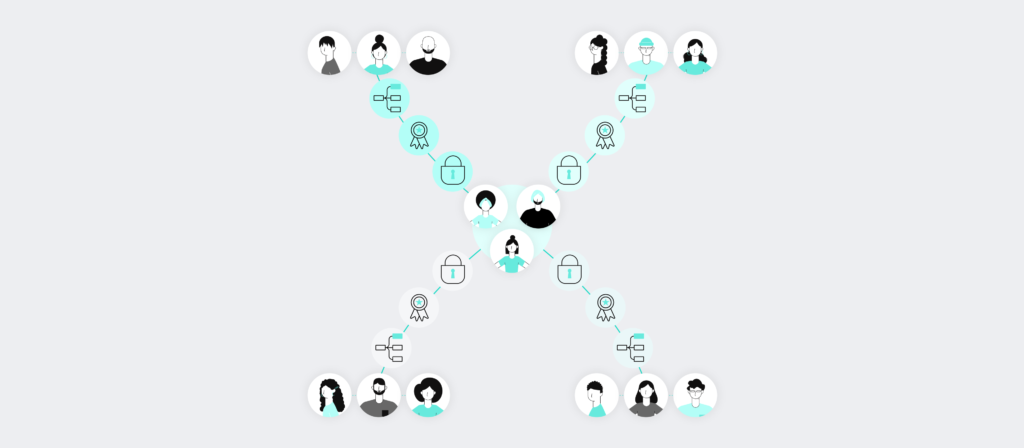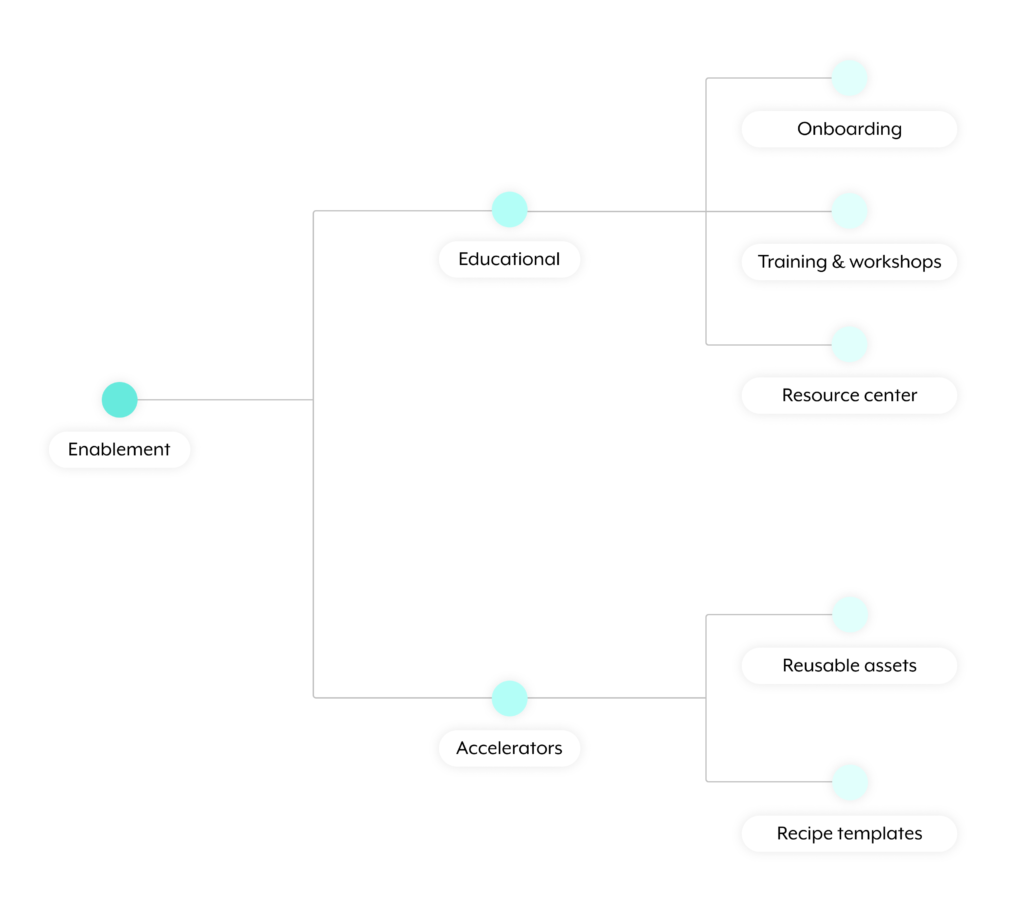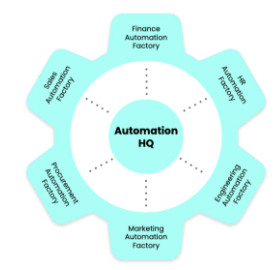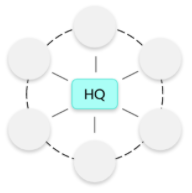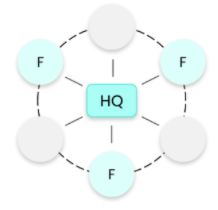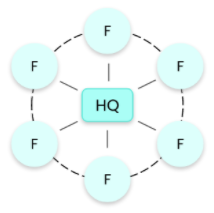As your IT team moves your organization along its automation journey, they face two competing pressures: automating at scale and keeping business apps and data secure.
Business teams are looking to automate more processes themselves, and the rise of low-code/no-code tools has allowed them to satisfy this want.
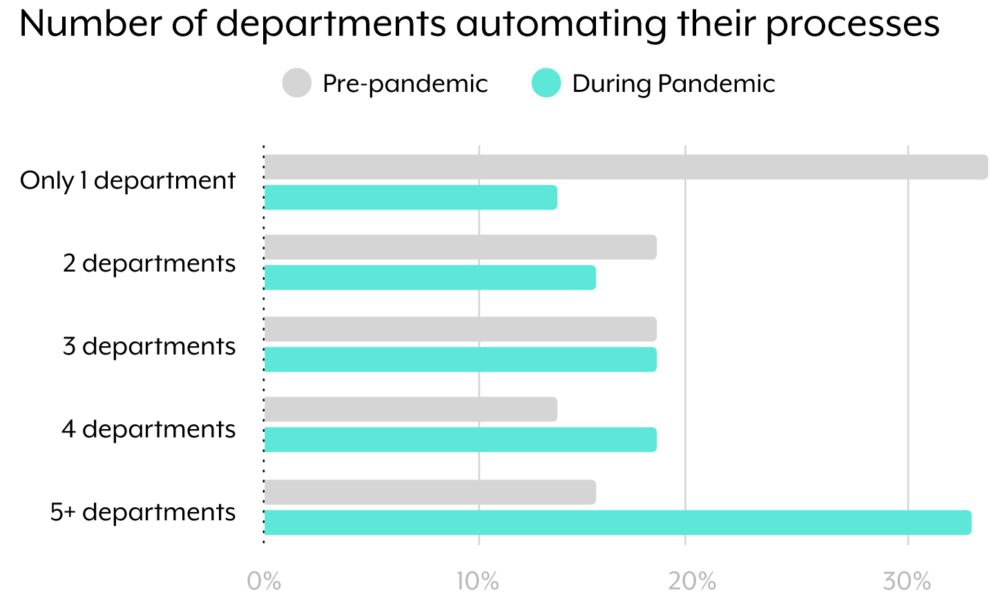
Without the proper safeguards in place, however, this rise in automation adoption increases the chances that employees access data they shouldn’t. Worse yet, they might inadvertently modify the data in the source systems.
Adding fuel to the fire, your citizen integrators have little to no experience in building and running automations. As a result, they might not feel comfortable building ones that address their most critical use cases.
So, what options are you left with?
We’ll introduce an automation governance model that can help you juggle these considerations successfully. We’ll then explore various ways to go about implementing this model so you can begin instituting it yourself.

Ready to automate at scale?
Workato offers a low-code UX that allows business teams to implement automations, while providing IT oversight and control through enterprise-grade governance and security features. You can learn more by scheduling a demo.
Automation HQ: the foundation of enablement and governance
The model starts with a team that makes up your “Automation HQ.”
This group of individuals is tasked with putting together the proper governance and security measures, but more than that, they’re implementing a variety of enablement activities that fall in one of two buckets: education or accelerators.
You can think of education as any measure that helps citizen integrators gain expertise on building and operating integrations and automations at your business.
Your Automation HQ can educate citizen integrators through the following:
- Onboarding program: Citizen integrators need to pass self-paced courses either designed by the Automation HQ or by the automation platform that’s used.
Once a citizen integrator passes the courses, they join an Automation HQ-hosted workshop that’s tailored to their skill level and area of interest. During the workshop, trainees are assigned specific automation projects where they can showcase their learnings while learning about their organization’s processes and procedures around implementing automations.
- Trainings and workshops: The Automation HQ team can invite citizen integrators to recurring workshops and trainings that cater to their skill sets and interests.
- Resource center: To help your Automation HQ avoid answering the same set of questions over time, they can share a variety of answers to common questions in your company’s wiki (e.g. Guru). Your team can also use that wiki to provide additional information, such as updates to internal processes, new trainings being offered, or general best practices that address recent issues.
Accelerators, meanwhile, are pre-packaged resources and assets provided by your Automation HQ that aim to help citizen integrators build more powerful integrations and automations around a given use case. An accelerator might include customizable automation templates (or recipe templates), pre-built connectors, data models, documentation, and more.
Finally, while the composition of your Automation HQ team depends on the maturity of your automation program, in an ideal world it’s made up of the following individuals:
- The platform owner and governance lead defines and enforces governance processes, best practices, and standards across the organization’s automations. This individual, or group of individuals, is also tasked with setting performance targets for the automations, reporting on performance, and designing improvement targets over time.
- Evangelist and trainers: The former shares success stories across the organization to help spur awareness of and demand for the automation program; the latter runs the workshops, trainings, and the onboarding program.
- Master chef: This sub-team provides the reusable assets and automation templates for citizen integrators and may lend a helping hand when an automation isn’t working as intended. Moreover, they may go on to implement business-critical and fairly complex automations themselves.
Related: When it makes sense to adopt an automation center of excellence
Automation Factories: the teams that make up your citizen integrators
With the Automation HQ in place, you can start to build out your Automation Factories, or specific teams that map to a department or automation category.
Ideally, an Automation Factory includes business subject matter experts, business analysts, app admins, a project manager, as well as someone in an IT operations role.
Here’s a breakdown of their areas of responsibility:
- Change owner: Your app administrator would be responsible for testing and implementing any changes to your automations.
- Release manager: This role can also fall to your app admin, who’d be tasked with planning and managing production releases and leading rollbacks when necessary.
- Change manager: Your business SME would review and authorize any changes as well as communicate those changes internally.
- Change approver: Your colleague in ITOps performs the final round of approval to ensure your standards are maintained.
- Incident manager: Your ITOps team member can also take this on, and they’d be responsible for monitoring and reporting any incidents in addition to supporting problem resolution.
Related: How Box performs automation governance
How it all comes together
So how does your Automation HQ and Automation Factories work with one another? The answer, again, is that it depends on the maturity of your automation program.
At a high level, you have three models to choose from: centralized, hybrid, distributed.
As your program delivers increasing value to the business and as your Automation Factories become more self-sufficient, you’ll be able to move from one model to the next (i.e. centralized to hybrid, or hybrid to distributed).
Let’s take a closer look at each model:
1. Centralized model: Your Automation HQ would implement and maintain all of the integrations and automations on behalf of Automation Factories. Moreover, the Automation HQ would be funding this initiative themselves.
This model all but ensures that automations adhere to your organization’s standards, but since there are only a few builders, the issue of scalability is likely to crop up.
2. Hybrid model: The Automation Factories are participating in the process of building and operating automations, but the Automation HQ is likely to take on more complex and business-critical projects. At this stage, the operation can be funded either by the Automation HQ or by individual business units (or a combination of both).
3. Distributed model: The Automation Factories manage the automations end-to-end, while the Automation HQ oversees the governance and security policies and practices. At this point, the Automation Factories are likely funding their respective efforts.
Related: An analysis on 3 automation operating models
Implement automation governance with Workato, the leader in enterprise automation
Once you combine Workato’s platform capabilities with one of these operating models, your automation practice is set to benefit in a number of ways—from being more aligned with your business strategy to offering greater agility.
Moreover, you don’t have to take this undertaking on your own. Our team has developed a framework that helps organizations across industries and sizes implement these operating models: GEARS (govern, enablement, adoption, run & optimize, and scale).
